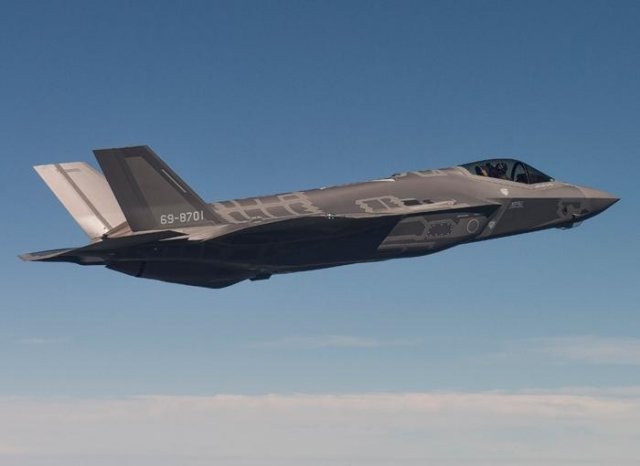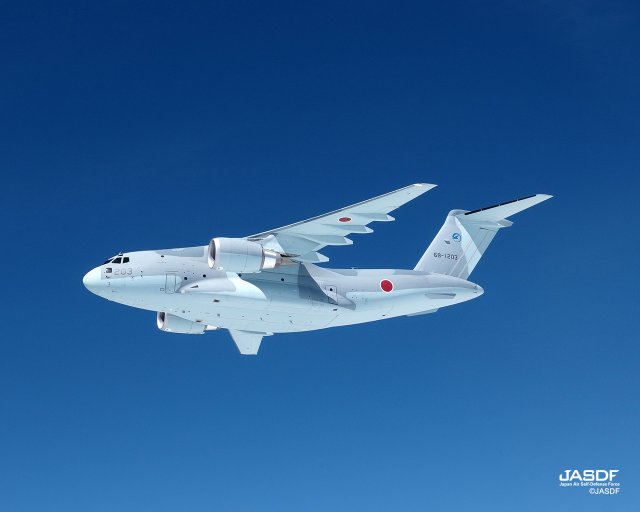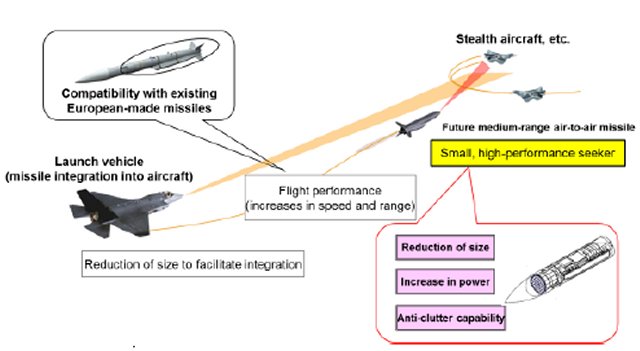| a | |||
|
|
|||
|
World Defense & Security News - Japan
|
|||
|
|
|||
|
Japan MoD details air force acquisitions and programs for FY2018
|
|||
|
By Nathan Gain
Japan will steadily improve its defense capabilities in FY2018 as the final fiscal year of the country's Medium Term Defense Program launched in 2013 in order to develop the Dynamic Joint Defense Force. Japan will especially build up defense capabilities while focusing on JASDF ISR, transport, C3I and air dominance tasks. |
|||
|
|
|||
 First JASDF F-35A fighter jet during its maiden flight at Fort Worth, Texas First JASDF F-35A fighter jet during its maiden flight at Fort Worth, Texas(Credit: JASDF Twitter account) |
|||
|
|
|||
|
Tokyo on December 28, 2017, officially released the English version of the "Defense Programs and Budget of Japan" document, in which the MoD details the FY2018 budget request.
On the ISR segment, Japan will allocate $73.9M to implement E-767 AWACS aircraft modifications necessary for conversion of central computing devices and installation of electronic warfare support equipment. Acquisition of one RQ-4B Global Hawk UAV is also planned for an amount of $128M, "in order to enhance persistent wide-area surveillance capability". Japan also plans an extra $44.5M for other related expenses, such as the development of necessary facilities for the Global Hawk fleet. The FY2015 et FY2016 budgets were used to acquire aircraft components for three platforms and ground elements for remote control operations. The JSDF will also launch the development of a next-generation ground-based warning and control radar system worth $174M. |
|||
|
|
|||
 The Japanes MoD will fund acquisition of two C-2 airlifters The Japanes MoD will fund acquisition of two C-2 airlifters(Credit: JASDF) |
|||
|
|
|||
|
To ensure and maintain air superiority, Japan will fund the acquisition of six F-35A fighter jets for $784M, while $266M will be allocated for other related expenses, such as ground support equipment. The JASDF will also upgrade its F-2 fighter jets by equipping them with improved air-to-air capability and Japan Self Defense Force Digital Communication System (Fighter), or JDCS (F). The Air Force plans to shift the posture of fighter squadrons to develop readiness and strengthen defense posture in the southwestern region. The JASDF will retire a F-4 squadron at Hyakuri Air Base and establish the new 302nd Fighter Squadron equipped with F-35A fighter jets at Misawa Air Base.
Among others promising technology fields, Japan will pursue research on a medium-range air-to-air missile. Japanese scientists will conduct research on a small, high-performance microwave seeket capable of being integrated into fighter aircraft. It will be compatible with an existing missile through Japan-UK joint research. Unveiled last week by the US DoD, Japan's plan to acquire one KC-46 aerial refueling and transport aircraft for around $246M "will allow fighter squadrons, etc. to continuously execute various operations in the airspace surrounding Japan". One JASDF C-130H will be modified to add an aerial refueling capability "in order to ensure adequate scope and time for search and rescue activities by UH-60J rescue helicopters. |
|||
|
|
|||
 Schema explaining Japan's JNAAM missile project Schema explaining Japan's JNAAM missile project(Credit: Japan MoD) |
|||
|
|
|||
|
In order to enhance rapid deployment and response capabilities, the JASDF will acquire two C-2 transport aircraft worth $400M following the decreasing number of current C-1 airlifters.
Tokyo is also eyeing acquisition of one Citation 680A flight check aircraft. Acquiring a flight check aircraft will ensure flight safety of JSDF and civilian aircraft by maintaining and managing airport functions through checks of flight security-related wireless facilities. In FY2018, Japan promotes various initiatives to further rationalize and streamline overall equipment acquisitions, seeking to save about $1.14Bn. The MoD will pursue reduction of procurement cost and stable acquisition by making use of long-term contracts of five years or longer. It will especially establish long-term contract of Performance Based Logistics of maintenance parts for the F-2's F110 engine, with an expected reduction of $44.5M for the next six years. |
|||
















